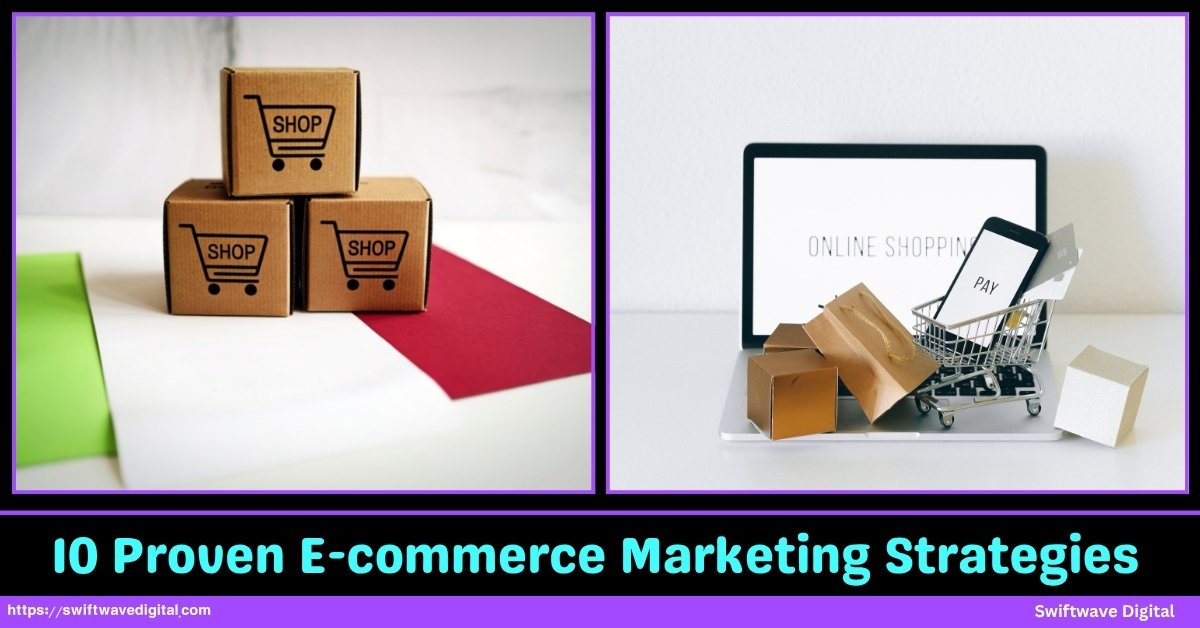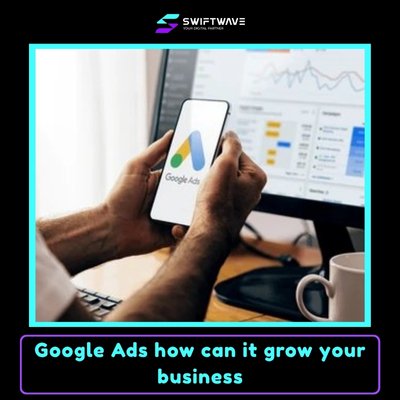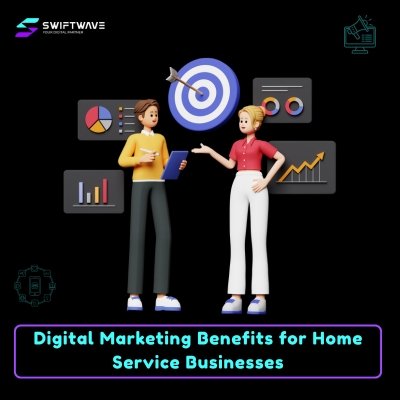E-commerce has revolutionized how people buy and sell—breaking the limits of geography, timing, and scale. Today, over 2.6 billion people shop online, and global e-commerce sales are expected to surpass $6.5 trillion by 2025. But with this explosive growth comes fierce competition.
Thousands of stores launch every month, and only those with smart, data-driven marketing strategies truly stand out. Success is no longer about just listing products it’s about how effectively you attract, convert, and retain your audience in an overcrowded digital space.
From optimizing search visibility and crafting targeted ads to leveraging social proof and loyalty systems, e-commerce growth depends on mastering multiple marketing fronts simultaneously.
Businesses that apply tested, measurable methods can scale faster and with higher ROI, while those relying on guesswork risk getting lost in the crowd.
10 Proven E-commerce Marketing Strategies
In this guide, we will explain 10 proven E-Commerce Marketing Strategies that drive consistent growth, higher conversions, and lasting customer relationships.

1. SEO & Organic Search Optimization
Search Engine Optimization (SEO) is the foundation of every successful e-commerce business. It ensures your products appear where your customers are looking — search engines like Google.
Around 23% of e-commerce purchases originate from organic search, proving that visibility equals profitability. Begin with keyword research using tools like Google Keyword Planner or Ahrefs.
Target “buyer intent” keywords that match what people actually search when ready to purchase, such as “buy leather jacket online” or “best budget smartphone.”
Optimize product titles, meta descriptions, URLs, and alt tags with those keywords. Use structured data markup so Google understands your products’ price, availability, and ratings.
Build internal links between product, category, and blog pages to improve navigation and indexability. Regularly update product content and create valuable guides that answer search queries.
SEO is not a one-time setup it’s ongoing refinement based on analytics and ranking data. Brands that stay consistent with SEO efforts enjoy long-term free traffic and steady conversions without relying heavily on ads.
2. Content Marketing (Guides, Blogs, Videos)
Content marketing helps turn browsers into buyers by educating and engaging your audience. In e-commerce, content builds trust and drives organic discovery.
Use blogs, videos, and tutorials to answer common questions like “how to choose the right size” or “best ways to use this product.” Focus on clarity and usefulness, not fancy writing.
Use visuals to demonstrate product benefits videos showing product use cases or “unboxing” content perform especially well.
A simple content framework is: identify a problem → provide a solution → recommend your product as part of the solution. Maintain a blog that covers buying guides, comparisons, trends, and FAQs.
This boosts search visibility and authority in your niche. Integrate internal links directing readers to product pages. Repurpose blog content into short social videos or carousel posts to increase reach.
A consistent content strategy compounds traffic and trust over time turning your site into both a store and an information hub for potential customers.
3. Paid Advertising / PPC (Google, Social)
Paid advertising gives e-commerce stores quick visibility and fast sales results when done strategically. Use platforms like Google Ads for search and shopping campaigns and social channels such as Meta (Facebook/Instagram), TikTok, or Pinterest for visual targeting.
Start small by testing different ad creatives, audiences, and placements. Prioritize high-intent campaigns like Google Shopping or dynamic retargeting ads before broad prospecting.
Set clear conversion goals and track cost per acquisition (CPA). Always test ad copy, visuals, and CTAs to find what drives the best ROI. Avoid vanity metrics like clicks or impressions; focus on conversions and return on ad spend (ROAS).
Monitor your campaigns daily pause underperforming ads and reallocate the budget to winning ones.
A well-run PPC campaign brings immediate traffic and complements SEO, helping fill gaps while organic growth builds up. Combine paid ads with remarketing and email follow-ups to maximize conversions from every visitor you attract.
4. Social Proof, Testimonials & Reviews
In online shopping, trust is everything. Customers cannot touch or test your products, so they rely on other people’s experiences. Social proof in the form of ratings, reviews, and testimonials directly impacts conversions.
More than 90% of shoppers read reviews before buying. Encourage customers to leave feedback through post-purchase emails or small incentives.
Display reviews prominently on product pages, homepage sections, and checkout pages. Include star ratings and real photos from verified buyers to make the feedback feel authentic.
Use testimonials in social ads and email campaigns to build credibility. Social proof widgets like “X people bought this recently” also trigger urgency and trust.
Address negative reviews politely and publicly showing transparency can strengthen your brand image. Over time, an authentic base of reviews reduces purchase hesitation and drives repeat confidence in your store.
5. Email Marketing & Segmentation
Email marketing remains one of the highest ROI channels for e-commerce. It’s direct, low-cost, and fully controlled by you. But success depends on segmentation and automation.
Don’t blast the same message to everyone. Segment customers based on behavior: new subscribers, first-time buyers, repeat customers, and inactive users.
Create automated flows welcome series for new sign-ups, cart abandonment reminders, reactivation emails for dormant customers, and post-purchase upsell emails.
Personalize subject lines with customer names or products viewed. Keep emails short, visual, and mobile-friendly. Include one clear call-to-action per message. Track open rates, click-throughs, and conversions to refine your messaging.
Combine email campaigns with seasonal offers, loyalty updates, and educational content to stay valuable.
Consistent and personalized email communication builds relationships and keeps your brand top-of-mind even when customers aren’t actively shopping.
6. Cart Abandonment & Exit-Intent Recovery
Cart abandonment is one of the biggest lost opportunities in e-commerce around 70% of shoppers leave without completing checkout. Recovering even a small portion significantly increases revenue.
Set up automated cart recovery systems. Send the first reminder email within one hour of abandonment, followed by one after 24 hours and a final one after 48 hours.
Include a picture of the abandoned product, a direct checkout link, and optionally a small discount or free shipping incentive. Use exit-intent popups to offer a limited-time deal when users move their cursor toward closing the tab.
Retarget visitors with dynamic ads showing the exact products they left behind. Simplify your checkout process remove unnecessary form fields and add multiple payment options.
The goal is to remove friction and give users a reason to return. Optimizing abandonment recovery doesn’t just boost sales it directly improves overall marketing efficiency by converting lost traffic into customers.
7. Upsell, Cross-sell & Bundling
These strategies maximize revenue per customer without extra ad spend. Upselling encourages customers to buy a higher-value version of the product, while cross-selling promotes complementary items.
Bundling offers a package deal combining multiple products at a discount. Implement “Frequently Bought Together” or “You May Also Like” suggestions on product and cart pages.
Example: if someone buys a camera, suggest a memory card or tripod. Post-purchase emails can promote accessories or upgrades. Use thresholds like “Spend $10 more for free shipping” to increase average order value.
Keep recommendations relevant irrelevant offers frustrate customers and hurt trust. Analyze buying patterns through data to identify strong product pairings.
Test different bundle pricing to find the sweet spot between value and profit. These small improvements across thousands of transactions lead to major revenue growth over time.
8. Influencer & Affiliate Marketing
Influencers and affiliates can expand your reach and drive targeted traffic cost-effectively. Influencer marketing uses creators with engaged audiences to showcase your product authentically.
Choose influencers within your niche who align with your target demographics smaller micro-influencers often deliver better engagement than big names. Offer them affiliate links or discount codes to track performance.
Affiliates work similarly, earning commission per sale through referral links. Build a structured affiliate program with clear rules, payout terms, and approved promotional assets.
Provide them with regular updates, new product information, and creative materials. Track conversions via dashboards or affiliate platforms. These partnerships allow you to reach warm audiences who already trust the recommender.
Measure success in terms of conversions, not just impressions or likes. Done right, influencer and affiliate marketing act as long-term revenue channels rather than one-off promotions.
9. Personalization & Behavioral Targeting
Personalization is about showing customers what’s most relevant to them based on their data. Modern e-commerce platforms allow you to track browsing history, purchase patterns, and preferences.
Use that data to deliver tailored product recommendations, personalized emails, and dynamic website content. Example: if a customer browses sneakers but doesn’t buy, show sneaker-related offers on their next visit or email follow-up.
Segment ads and newsletters based on interests or past behavior. Display “recently viewed” or “similar products” sections to make navigation intuitive.
Personalized experiences make customers feel understood and increase conversion rates significantly. However, balance personalization with privacy comply with data protection laws and be transparent about tracking.
Behavioral targeting allows marketing efforts to focus only on high-intent users, improving ROI and customer satisfaction simultaneously.
10. Loyalty & Retention Programs
Customer retention is more profitable than acquisition. A loyalty program gives customers reasons to keep coming back. Offer reward points for every purchase, social share, or referral, redeemable on future orders.
Create membership tiers such as Silver, Gold, and Platinum with increasing benefits like early access or exclusive discounts. Send personalized birthday rewards or anniversary offers to strengthen connection.
Use post-purchase follow-ups to thank customers and invite them into the loyalty system. Track repeat purchase rate and lifetime value (LTV) to measure program success.
Retention campaigns can also include surveys or re-engagement emails offering incentives to return. Loyal customers spend more and act as brand advocates, providing organic referrals.
A well-built retention system creates stable recurring revenue and reduces dependency on continuous new customer acquisition.
Putting It All Together: Framework & Sequence
Implementing these strategies works best when done in a logical sequence. Start by improving your foundation — SEO, content, and site performance. Then, run paid campaigns to generate quick traffic while organic channels mature.
Collect data on visitors, conversions, and behaviors. Use that data to build email lists, create personalized automation, and deploy retargeting.
Gradually integrate social proof and loyalty elements to reinforce trust and retention.
Focus on one major optimization per month instead of launching everything at once. Continuously test headlines, visuals, and pricing to identify what performs best.
Measure key metrics such as conversion rate, customer acquisition cost (CAC), average order value (AOV), and customer lifetime value (CLV). Allocate budgets based on performance rather than assumptions.
The key to scaling is iteration analyze results, adjust tactics, and repeat. A balanced mix of organic, paid, and retention channels ensures steady, long-term growth.
Realistic Challenges & Mitigations
E-commerce marketing faces common challenges like high competition, ad fatigue, and low conversion rates. The main issue is spreading efforts too thin across too many platforms without proper tracking.
To counter this, prioritize data-driven actions. Use analytics to identify where your best customers come from and invest more there.
If ad costs rise, balance with SEO and email campaigns that reduce dependency on paid reach. Address cart abandonment through user experience improvements simplify checkout and ensure your site loads fast on mobile.
Manage inventory carefully to prevent out-of-stock frustrations. Overcome creative fatigue by refreshing visuals and messaging regularly. Handle privacy regulations by maintaining transparency with customer data use.
Finally, train your team to align marketing, sales, and customer support. Cohesion across departments ensures every touchpoint reinforces the brand’s value and message consistently.
Evidence & Supporting Stats
Data consistently confirms these strategies deliver results:
-
Global e-commerce sales reached $5.8 trillion in 2023 and are projected to hit $6.5 trillion by 2025.
-
About 23.6% of e-commerce orders originate from organic search, proving SEO’s impact.
-
Email marketing provides an average ROI of 3600%, meaning $36 return for every $1 spent.
-
92% of consumers trust peer recommendations more than ads, highlighting the role of reviews.
-
Cart abandonment rates average 70%, yet recovery emails can restore 10–15% of lost sales.
-
Personalized marketing improves conversion rates by up to 20%, and repeat buyers spend 67% more than new customers.
These figures underscore one principle: sustainable growth depends on combining organic visibility, targeted paid efforts, trust-building tactics, and strong retention systems.
Conclusion
E-commerce growth depends on disciplined execution, not guesswork. The most successful brands focus on measurable actions that attract, convert, and retain customers consistently.
SEO builds long-term visibility, content educates and engages, and paid ads bring fast, targeted traffic. Social proof and reviews turn doubt into trust, while email segmentation and cart recovery systems bring back lost opportunities.
Upselling, personalization, and loyalty programs raise lifetime value and create repeat revenue without increasing acquisition costs.
Each strategy strengthens the other, forming a marketing system that scales sustainably instead of relying on short-term spikes. The key is to test, analyze, and refine based on real data not assumptions or trends.
Stay consistent, monitor ROI, and keep improving your user experience. When your marketing ecosystem runs on insight and intent, every visitor has a clear path to become a customer and every customer has a reason to return.
In short, e-commerce success isn’t about doing more — it’s about doing what works, doing it well, and doing it consistently.



